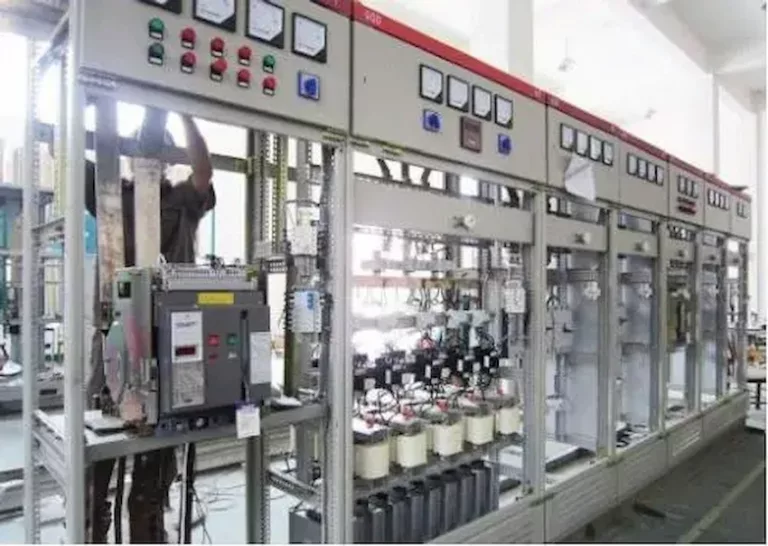
How to Choose Pad Mounted Transformer?
Table of Contents Selecting the right pad-mounted transformer requires careful consideration of several critical factors, as these ground-mounted distribution transformers play a vital role
ELECTRIC, WITH AN EDGE
The transformer needs to establish an alternating magnetic field before energy conversion and transmission can be carried out.
In order to establish an alternating magnetic field and induced magnetic flux, electric power is required.
This electric power is called the reactive power of the transformer.
The maximum speed of energy exchange between the inductor and the power source is called reactive power. It is represented by the symbol Q, and the unit of calculation is Var or KVar.
Reactive power is by no means useless power. In an AC power supply system, both inductors and capacitors are indispensable loads. Ferromagnetic loads such as motors and transformers.
The transformer needs reactive power to make the primary coil of the transformer generate a magnetic field and induce a voltage in the secondary coil.
Therefore, without reactive power, the motor will not rotate, the transformer will not transform, and the AC contactor will not pull in.

Q-reactive power (var); U-phase voltage (V); I-phase current (A).
1. Single phase: Q=UIsin
2. Three-phase: Q= UIsin
When the angle is between 0 and 90, Sin(Θ) is a positive value;
When the angle is between 270 – 360, Sin(Θ) is a negative value;
When it is between 0 and 90, it means that the characteristic of the load is inductive, and the voltage signal on the actual load leads the signal.
When it is between 270 and 360, it means that the characteristic of the load is partial capacitive, and the current signal on the actual load leads the voltage signal.
The positive/negative reactive power factor reflects the characteristics of the load.
When the reactive power decreases or increases, the active power does not change. But when the reactive power decreases, the current will decrease and the line loss will decrease. On the contrary, the line loss will increase.
What is the no load losses of transformer?What is the short-circuit loss of the transformer
When the supply voltage is higher than 10% of the rated value, the reactive power will increase very quickly due to the saturation of the magnetic circuit. When the supply voltage is lower than the rated value, the reactive power will also respond to the reduction so that their power factor has Improved.
The reactive power consumed by the transformer is generally about 10% to 15% of its rated capacity, and its no-load reactive power is about 1/3 of the full load. Therefore, in order to improve the power factor of the power system and the enterprise, the transformer should not operate at no-load or in a long-term low-load operation state.
The power factor of transformers in more developed countries is relatively high.
Vigorously improving the power factor of transformers, reducing line losses, and saving energy are the inevitable directions for the development and progress of the current power grid.
Parallel installation of a certain capacity capacitor or other reactive power compensation device at the appropriate position of the transmission line can play a role in improving the power factor and reactive power compensation.
Therefore, the transformer has a great demand for a control system that can intelligently switch the compensation capacitor according to the change of the reactive power in the line and realize the reactive power compensation. Solving the problem of reactive power compensation is extremely important for transformer loss reduction and energy saving.
Assume that the rated capacity of a transformer is S=400KVA and the power factor is 0.9.
Then the active power is P=S*power factor=400*0.9=360KW
Reactive power is Q=(S^2-P^2)^0.5
There are three main methods of reactive power compensation: low-voltage individual compensation, centralized compensation, and decentralized compensation.
Low-voltage individual compensation is to randomly connect single or multiple low-voltage capacitor banks with the electrical equipment according to the reactive power requirements of the individual electrical equipment. It shares a set of circuit breakers with the electrical equipment. Through process control, shelter assembly and electromechanical switching at the same time.
Centralized compensation means that all capacitor banks are installed on the bus on the primary or secondary side of the substation. This compensation method is simple to install and reliable in operation, but the compensation effect is worse than the previous two compensation methods, and the cost is relatively high.
Decentralized compensation is to install capacitors in groups on the outlet of each branch of the workshop power distribution room or substation. It can put in or remove the capacitor bank according to the change of the system load, and the compensation effect is better. But the cost is relatively high.
Compensate reactive power and improve power factor;
Reduce the loss of transmission lines and transformers;
Increase the transmission capacity of the power grid and improve equipment utilization;
Improve voltage quality;
Save electricity bills.

Table of Contents Selecting the right pad-mounted transformer requires careful consideration of several critical factors, as these ground-mounted distribution transformers play a vital role

The primary function of the pad mounted transformer is to serve as a critical distribution transformer that steps down higher primary voltage from utility distribution

A pad mounted transformer operates through electromagnetic induction, serving as a crucial distribution component that converts high voltage electricity to lower, usable voltages for residential

When looking for the best pad-mounted transformer manufacturer, it’s important to find industry leaders known for reliability and innovative solutions. Pad-mounted transformers are essential in
After filling in the contact information, you can download the PDF.
5 Responses
Bardzo ciekawy blog, rzeczowy i wyważony. Od dzisiaj zaglądam regularnie. Pozdrowienia 🙂
Prawdziwy z Ciebie talent i mistrz pióra z ogromną łatwością przekładasz myśli na słowa… trzymaj tak dalej, dbaj i pięlęgnuj swego bloga… Skąd czerpiesz tak ciekawe inspiracje ?
Fajnego masz bloga i ciekawe na nim treści czy na serwerze wszystko sie zmieści ? pięknie frazujesz słowa zmuszasz przy tym do myślenia tym komentarzem życzę powodzenia 🙂
Witam, Twój blog jest fantastyczny. Jestem święcie przekonany, że przy tak merytorycznych wpisach jakie prezentujesz już wkrótce podbijesz szczyty wyszukiwarek w swojej niszy. Gratuluję 😉
I like what you said the reactive power, current, and line loss will all decrease as the reactive power falls. This is a good article, my uncle is looking for info and this should help him. I wanted to thank you for your explanation about power transformers.